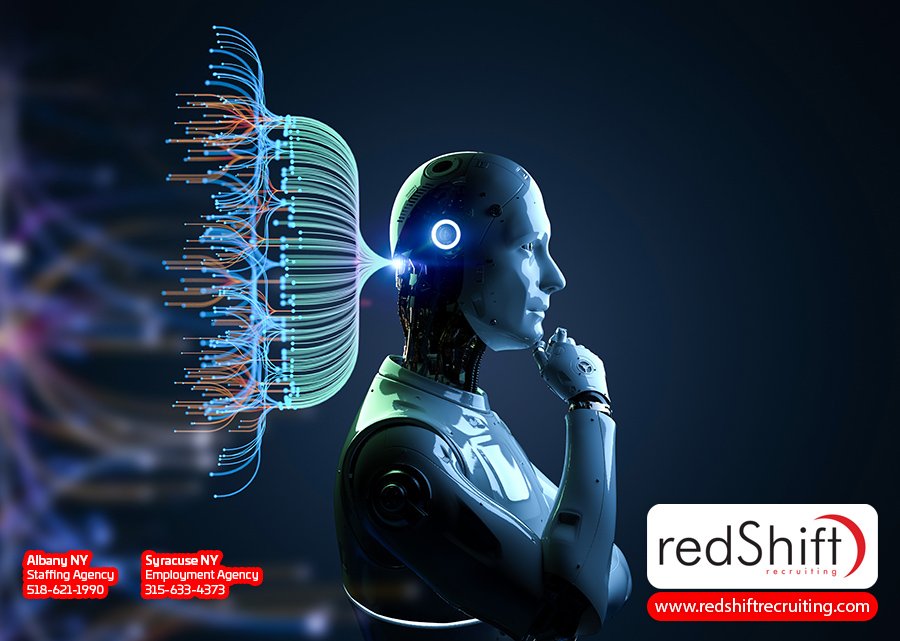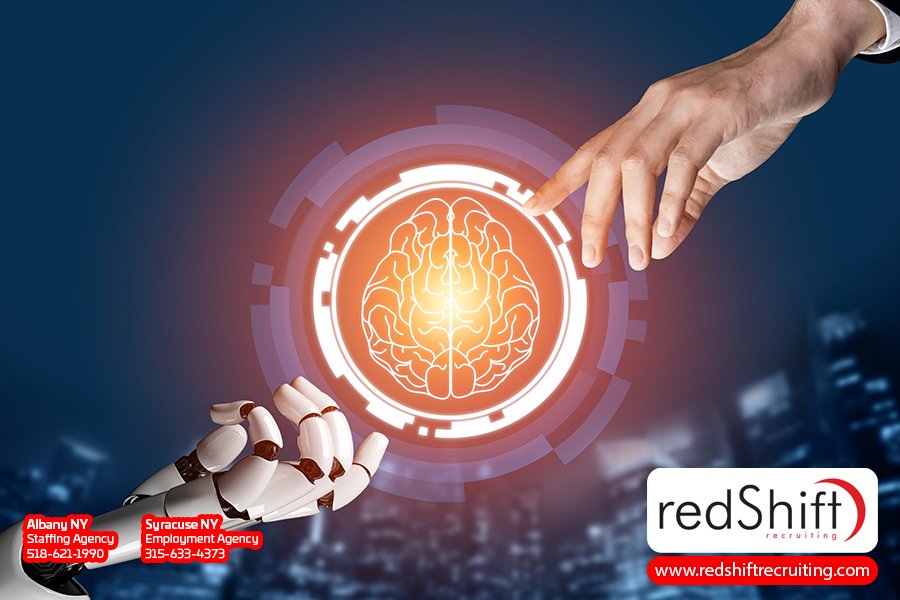
Scikit-Learn: A Comprehensive Machine Learning Library
Are you tired of sifting through an endless sea of machine learning libraries, desperately searching for the perfect one to fit your needs? Look no further, because Scikit-learn is here to save the day!
With its comprehensive range of tools and intuitive interface, Scikit-learn is the ultimate solution for all your machine learning woes. Scikit-learn has emerged as a dominant force in the world of machine learning, providing users with an array of powerful algorithms and techniques.
Whether you're a seasoned data scientist or just dipping your toes into the vast ocean of AI, Scikit-learn offers something for everyone. Its extensive collection of modules allows you to effortlessly preprocess data, train models, and evaluate their performance with just a few lines of code.
Plus, its user-friendly documentation and vibrant community make it easy to navigate and learn from others who share your passion for all things ML. So why waste time struggling with other libraries when you can join the ever-growing family of Scikit-learn enthusiasts?
Introduction
Scikit-learn is like your trusty sidekick for machine learning, providing a comprehensive library that makes diving into the world of data analysis and prediction feel like a breeze. With scikit-learn, you've got access to a wide range of machine learning algorithms and models that can be easily implemented on your training data.
Whether you're a beginner or an experienced data analyst, scikit-learn offers the tools and resources to help you tackle any machine learning task.
One of the key features of scikit-learn is its ability to handle various types of input data. Whether your data is in the form of numerical values, categorical variables, text documents, or images, scikit-learn has got you covered. It provides efficient ways to preprocess and transform your data source input variables so that they can be used as inputs for training machine learning models.
Additionally, scikit-learn also includes powerful tools for exploratory data analysis and data visualization, allowing you to gain insights from your data before diving into model building.
Scikit-learn serves as an invaluable tool for anyone interested in machine learning. Its comprehensive library offers a wide range of machine learning algorithms and models that can be easily implemented on different types of input data. With its user-friendly interface and powerful tools for exploratory data analysis and visualization, scikit-learn makes it easy for both beginners and experienced analysts to leverage the power of machine learning in their projects.
The Origin of Scikit-learn
Discover the fascinating story behind the birth and growth of scikit-learn, a powerful machine learning library that has revolutionized the field of data science. Developed in 2007 by David Cournapeau as part of a Google Summer of Code project, scikit-learn was initially designed to provide a unified interface for various machine learning algorithms in Python.
Since then, it has evolved into a comprehensive library with extensive support for regression tasks, classification tasks, unsupervised learning, and dimensionality reduction.
Scikit-learn owes its popularity to several key factors. First and foremost is its seamless integration with the Python programming language, which is widely used in the data science community. This makes scikit-learn easily accessible to both beginners and experienced practitioners alike.
Additionally, scikit-learn boasts an extensive collection of well-documented and efficient implementations of machine learning algorithms. This allows users to quickly prototype and deploy machine learning models without having to worry about low-level implementation details.
Over time, scikit-learn has grown into one of the most popular Python libraries for machine learning due to its simplicity, versatility, and robustness. Its user-friendly API enables researchers and developers to effortlessly apply complex machine learning techniques to their projects.
By providing a wide range of tools and functionalities for various tasks such as regression, classification, unsupervised learning, and dimensionality reduction, scikit-learn has become an indispensable tool in the data scientist's toolkit.
Whether you're just starting your journey in machine learning or you're an expert looking for reliable solutions to real-world problems, scikit-learn is your go-to resource for all things related to machine learning in Python.
Why Scikit-learn?
Explore the reasons why you should choose scikit-learn, like its extensive collection of efficient implementations that allow you to effortlessly prototype and deploy machine learning models without worrying about low-level details.
Scikit-learn provides a wide range of algorithms for numerical data analysis, making it a versatile tool for various machine learning tasks. Whether you need to perform linear regression or classify images using support vector machines, scikit-learn has got you covered.
Its free and open-source nature makes it accessible to everyone, from beginners to experienced data scientists. One of the key strengths of scikit-learn lies in its comprehensive support for supervised and unsupervised learning algorithms.
You can easily apply logistic regression models or train neural networks with just a few lines of code. By providing standardized interfaces and easy-to-use functions, scikit-learn simplifies the process of building and evaluating machine learning models. Additionally, scikit-learn offers powerful tools for preprocessing data, such as feature scaling and dimensionality reduction techniques.
This ensures that your input data is properly prepared before training your models. Scikit-learn also excels at handling test data efficiently. It allows you to split your dataset into training and testing subsets with ease, enabling proper evaluation of model performance before deployment.
Furthermore, scikit-learn supports various evaluation metrics that help you assess the quality model accuracy of your models objectively. With its strong emphasis on performance optimization and scalability, scikit-learn is well-suited for handling large datasets and complex machine learning tasks.
Overall, choosing scikit-learn as your go-to machine learning library empowers you to tackle diverse challenges in data analysis while enjoying a supportive community that fosters collaboration and growth in the field.
Features of Scikit-learn
One of the notable attributes of scikit-learn is its wide range of powerful tools for data preprocessing and model evaluation, enabling efficient handling of complex machine learning tasks.
With scikit-learn, you can easily preprocess your data by handling missing values through methods like data imputation. This allows you to fill in the gaps in your dataset with reasonable estimates of target values, ensuring that your models have complete information to work with.
Moreover, scikit-learn provides various techniques for feature scaling, such as standardization and normalization, which help bring all features to a similar scale and prevent any particular feature from dominating the learning process.
Scikit-learn also offers extensive support for evaluating model performance. You can use different metrics like accuracy, precision, recall, and F1-score to assess how well your model is performing. Additionally, scikit-learn provides various techniques for parameter tuning to optimize your models' performance. By using methods like grid search or random search over a range of hyperparameters, you can find the best combination that maximizes your model's accuracy or any other chosen metric. This helps ensure that your models are fine-tuned and perform at their best on unseen data.
In terms limited number of algorithm types, scikit-learn covers a wide array of classification algorithms such as logistic regression and random forest. These algorithms allow you to train models on labeled data and make predictions on unlabeled instances based on learned patterns from the training set. Scikit-learn also supports other machine learning tasks like regression and clustering with various algorithms tailored for each task.
Overall, with its comprehensive set of tools for preprocessing, evaluation, algorithm selection, and parameter tuning combined with its extensive coverage of machine learning algorithms in Python, scikit-learn becomes an indispensable library for anyone working on machine learning projects.
Scikit-learn in Practice
Immerse yourself in the practical application of scikit-learn and uncover its real-world potential for data preprocessing, model evaluation, and algorithm selection. Scikit-learn provides a wide range of functionalities that make it an invaluable tool for machine learning applications.
When it comes to data preprocessing, scikit-learn offers various techniques such as handling missing from data structures, scaling features, encoding categorical variables, and more. By utilizing these preprocessing methods, you can effectively clean and prepare your data set for further analysis.
Model evaluation is another crucial aspect of machine learning, and scikit-learn simplifies this process with its built-in functions. You can easily split your data into training and testing sets using the train_test_split function. Once you have trained your model on the training data set, you can evaluate its performance on the testing set and data set using various metrics like accuracy, precision, recall, and F1 score. Scikit-learn also allows you to visually analyze the results with tools like confusion matrices and ROC curves.
When it comes to algorithm selection, scikit-learn provides a vast array of options ranging from simple linear models to complex ensemble methods. Each algorithm comes with default parameters that can be fine-tuned based on your specific requirements. The library also supports generalized linear models which are essential for statistical modeling tasks. With just a few lines of code, you can fit a linear function to your target variable and make predictions on new data points.
Scikit-learn is a comprehensive machine learning library that offers powerful tools for data preprocessing, model evaluation, and algorithm selection. Its user-friendly interface makes it accessible even to those who are new to machine learning. By leveraging scikit-learn's functionalities in real-world scenarios such as cleaning messy datasets or selecting the best algorithm for a given task, you can unlock its true potential in solving complex problems efficiently.
Resources and Community for Scikit-learn
Dive into a vibrant oasis of knowledge and collaboration where scikit-learn enthusiasts gather to share their insights. The scikit-learn community is a buzzing hub of machine learning aficionados who are eager to help each other grow. Hone your skills by tapping into the rich resources and supportive community that surrounds this powerful machine learning tool.
Resources:
Access an extensive collection of free machine learning library and materials that will fuel your journey towards mastering scikit-learn. Online tutorials, documentation, and textbooks provide comprehensive coverage of various topics, from the basics of machine learning to advanced techniques like ensemble methods and hierarchical clustering. Video tutorials and code examples further enhance your understanding, allowing you to grasp complex concepts with ease.
Community:
Connect with like-minded individuals through forums, mailing lists, and social media groups dedicated to scikit-learn. Engage in stimulating discussions, seek guidance on specific challenges you encounter during your projects, or simply find inspiration from success stories shared by fellow users. By actively participating in the community, you'll not only expand your network but also gain valuable insights from experienced practitioners.
Customer Segmentation:
Delve deeper into customer segmentation techniques using scikit-learn's tools and resources available within the community. Discover how this Python module can empower businesses by identifying distinct groups within their customer base. With access to training data sets and testing sets specifically tailored for customer segmentation analysis, you'll be able to uncover patterns and preferences that drive purchasing behavior. Leverage the power of scikit-learn's algorithms to create targeted marketing strategies that resonate with different segments of your audience.
By immersing yourself in this dynamic ecosystem surrounding scikit-learn, you'll have everything you need at your fingertips to excel in the field of machine learning. Embrace the support offered by both the vast array of resources available and the helpful members within the community as you embark on a rewarding journey towards becoming a proficient user of this exceptional library.
Scikit-learn's Future
Explore the exciting possibilities and potential advancements that lie ahead in the future of scikit-learn. As natural language processing continues to evolve, scikit-learn is expected to incorporate more advanced techniques for text analysis and sentiment analysis. This will enable users to extract valuable insights from textual data and enhance their understanding of customer feedback, social media trends, and other unstructured data sources.
Another area where scikit-learn is likely to make significant progress is in handling high dimensional data. With the increasing complexity of datasets, there's a growing need for efficient algorithms that can handle large feature spaces. Scikit-learn's future developments in lower dimensional space may include improved methods for dimensionality reduction, such as principal component analysis (PCA). PCA can transform high-dimensional data into lower dimensional spaces while preserving important information. This would allow users to analyze complex datasets more effectively and uncover hidden patterns or relationships.
Furthermore, as scikit-learn aims to maintain its position as a robust library for machine learning, it's expected to keep up with advancements in other Python libraries. For example, scikit-learn may integrate seamlessly with popular deep learning frameworks like TensorFlow or PyTorch, allowing users to leverage the power of neural networks alongside traditional machine learning algorithms. By combining the strengths of different libraries, scikit-learn can provide a comprehensive solution for a wide range of machine learning tasks.
The future of scikit-learn holds great promise with anticipated advancements in natural language processing, handling high dimensional data through dimensionality reduction techniques like PCA, and integration with other Python libraries. These key features will empower users with enhanced capabilities for analyzing complex datasets and extracting valuable insights. As scikit-learn continues to evolve alongside emerging technologies and user needs, it'll remain an indispensable tool in the field of machine learning.
Conclusion
To truly unlock the full potential of your data analysis, don't overlook the invaluable insights that await you with scikit-learn's cutting-edge capabilities. With its comprehensive set of machine learning algorithms and tools, scikit-learn empowers you to tackle complex problems in a streamlined manner.
Whether you're dealing with numerical values or data points, scikit-learn provides a rich array of methods to preprocess and transform your data. From handling missing values to scaling features, this library equips you with the necessary tools to ensure that your data is ready for modeling.
Scikit-learn also offers a wide range of supervised and unsupervised learning algorithms to cater to various scenarios. You can seamlessly train models on large datasets by utilizing parallel computing capabilities and efficiently explore different hyperparameters using cross-validation techniques. The library's ability to handle both classification and regression tasks makes it versatile for addressing a diverse range of problems.
Furthermore, scikit-learn incorporates advanced techniques such as ensemble methods and feature selection, allowing you to improve model performance even further.
Exploring scikit-learn will undoubtedly enhance your data analysis journey by providing you with robust machine learning capabilities. Its user-friendly interface, coupled with extensive documentation, makes it accessible for both beginners and experienced practitioners.
So why limit yourself? Dive into scikit-learn today and leverage its powerful algorithms, efficient preprocessing techniques, and vast array of functionalities to uncover valuable insights from your data sources. Don't miss out on the opportunity to make informed decisions based on accurate predictions and gain a competitive edge in this era driven by data-driven solutions.
Frequently Asked Questions
What are the common challenges faced by beginners when using Scikit-learn for the first time?
When beginners first start using scikit-learn, they often face a few common challenges. One major challenge is understanding the various algorithms and techniques available in the library. With so many options to choose from, it can be overwhelming to determine which one is the most appropriate for a given task.
Additionally, beginners may struggle with implementing these algorithms correctly, as scikit-learn requires a solid understanding of machine learning concepts and programming skills. Another challenge is preprocessing and cleaning the data before applying machine learning models. This step is crucial for achieving accurate results, but it can be time-consuming and complex for newcomers.
Finally, beginners may find it difficult to interpret and evaluate the performance of their models effectively. Understanding metrics such as accuracy, precision, recall, and F1 score requires some familiarity with evaluation techniques in machine learning. However, despite these challenges, beginners can overcome them by seeking out tutorials or online courses that provide step-by-step guidance on how to use scikit-learn effectively.
Can Scikit-learn handle large datasets efficiently?
Scikit-learn is capable of efficiently handling large datasets. Its algorithms are designed to be scalable and can handle millions of samples with ease. It incorporates various techniques such as stochastic gradient descent, mini-batch learning, and out-of-core learning to process data in batches, making it efficient even for datasets that cannot fit into memory.
Additionally, scikit-learn provides tools for parallel computing, allowing you to leverage the power of multiple cores or distributed systems for faster processing. With its ability to handle large datasets effectively, scikit-learn empowers you to tackle complex machine learning problems on a larger scale while maintaining high performance and accuracy.
Are there any limitations or drawbacks of using Scikit-learn for machine learning tasks?
Using scikit-learn for machine learning tasks does come with some limitations and drawbacks. While it's a comprehensive library, it may not be the best choice for handling extremely large datasets efficiently. The algorithms in scikit-learn aren't specifically designed to handle big data, so they may struggle with massive amounts of information.
Additionally, scikit-learn lacks certain advanced features available in other libraries, such as deep learning capabilities provided by TensorFlow or PyTorch. However, these limitations shouldn't discourage you from using scikit-learn altogether. It still offers an extensive range of tools and algorithms that can be incredibly useful for various machine learning tasks.
By understanding its limitations and considering the size of your dataset and specific requirements, you can make informed decisions about when to use scikit-learn and when to explore alternative options. Remember, belonging to a community of machine learning practitioners means being aware of the strengths and weaknesses of different tools and constantly seeking improvement in our approaches.
How does Scikit-learn compare to other popular machine learning libraries such as TensorFlow or PyTorch?
Scikit-learn, TensorFlow, and PyTorch are all popular machine learning libraries, each with its own strengths and weaknesses.
Scikit-learn is widely recognized for its ease of use and comprehensive set of tools for traditional machine learning algorithms. It provides a simple interface that allows users to quickly implement and evaluate various models.
On the other hand, TensorFlow and PyTorch are more focused on deep learning tasks, offering powerful frameworks for building and training neural networks. They excel at handling large datasets and complex models, enabling researchers to push the boundaries of cutting-edge AI techniques.
While scikit-learn may not have the same level of scalability or flexibility as these deep learning libraries, it remains an excellent choice for beginners or those working on simpler machine learning problems where interpretability is crucial.
Ultimately, your choice will depend on the specific requirements of your project and your familiarity with different libraries.
Are there any specific industries or domains where Scikit-learn is particularly well-suited for machine learning applications?
Scikit-learn is particularly well-suited for machine learning applications in a wide range of industries and domains. Its comprehensive set of tools and algorithms make it a versatile choice for both research and real-world applications.
In the healthcare industry, scikit-learn can be used for tasks such as disease diagnosis, patient monitoring, and drug discovery.
In the finance industry, it can help with fraud detection, risk assessment, and portfolio optimization.
For e-commerce companies, scikit-learn can enable personalized recommendations, customer segmentation, and churn prediction.
Additionally, scikit-learn's ease of use and extensive documentation make it accessible to users across various skill levels, further contributing to its appeal in different fields.
By leveraging scikit-learn's capabilities in your specific domain or industry, you can efficiently tackle complex machine learning problems and achieve meaningful insights that drive business success.
Conclusion
In conclusion, scikit-learn is an incredibly powerful machine learning library that offers a comprehensive range of tools and algorithms for data analysis and predictive modeling. It provides a user-friendly interface that allows both beginners and experts to easily implement machine learning techniques in their projects.
With its wide array of features such as classification, regression, clustering, and dimensionality reduction, scikit-learn has become the go-to choice for many data scientists and researchers.
One interesting statistic that highlights the impact of scikit-learn is its popularity among Python users. According to a recent survey conducted by KDnuggets, scikit-learn was ranked as the most popular machine learning library in 2020, with over 70% of respondents stating that they use it regularly. This statistic not only showcases the widespread adoption of scikit-learn within the data science community but also speaks to its reliability and effectiveness in real-world applications.
Moreover, scikit-learn's active development community ensures that it stays up-to-date with the latest advancements in machine learning research. The library continues to evolve with new features and improvements being added on a regular basis. Its strong documentation and extensive set of examples make it easy for users to get started and explore its capabilities.
In conclusion, if you're looking for a comprehensive machine learning library that's reliable, versatile, and widely used by professionals worldwide, then look no further than scikit-learn. With its vast range of features and ongoing development efforts, this library will continue to be at the forefront of machine learning innovation in the years to come. So why wait? Start exploring scikit-learn today and unlock endless possibilities for your data analysis projects!




